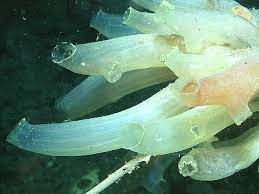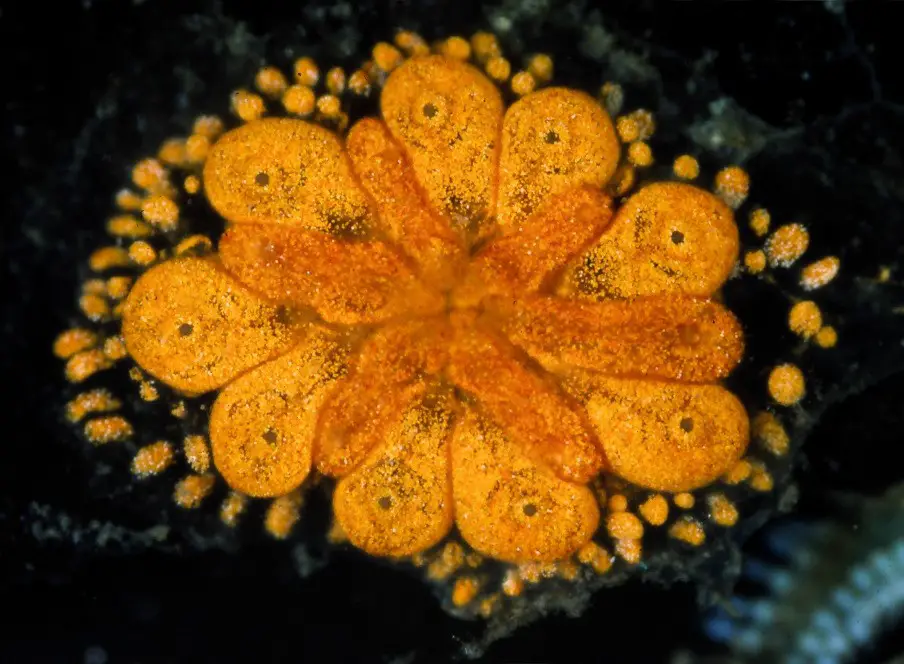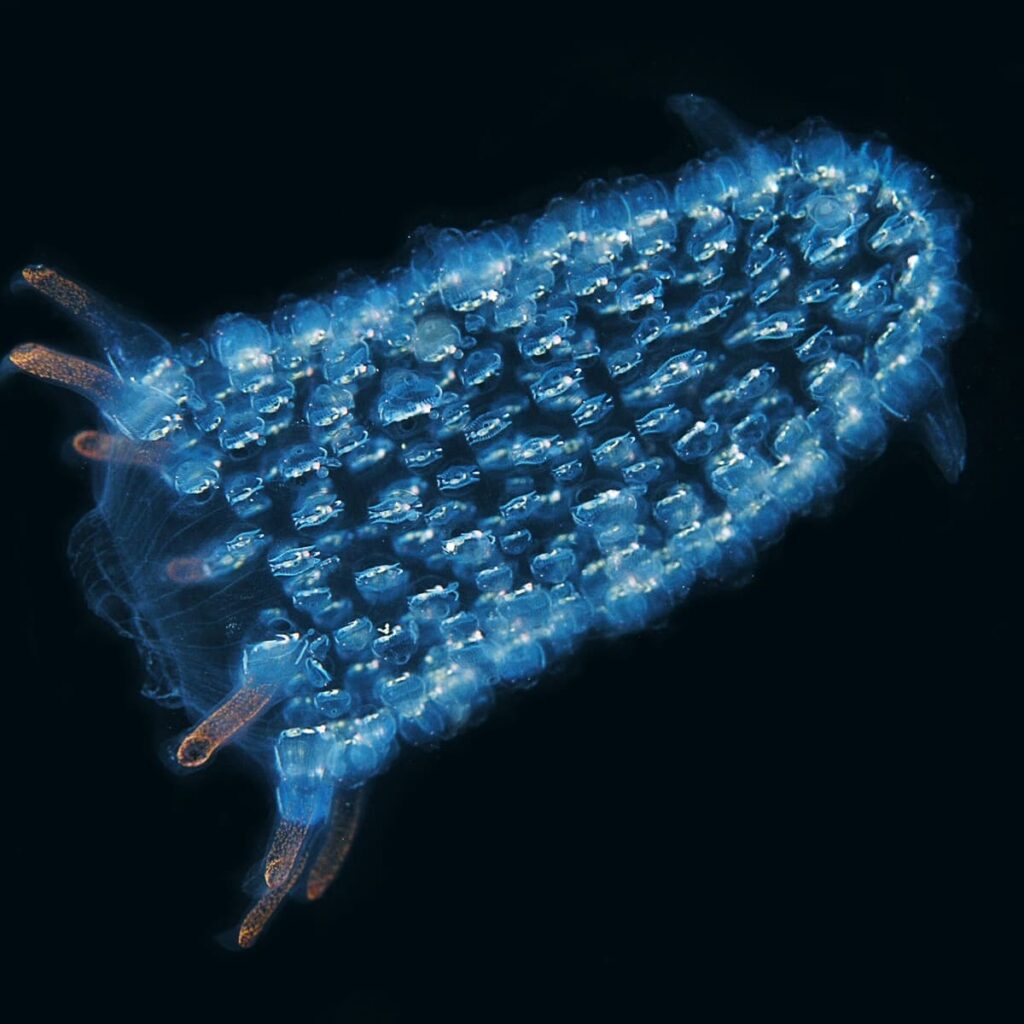Table of Contents
Ascidia:
It is solitary Urochordate generally live in groups on the rocks, it presents in sedentary state and lives in all depth of the ocean, have great similarity with Herdmania. Size is more than other Urochordate as compared to other members of Subphylum Urochordata, around 10 cm to 15 cm long.
It is cylindrical in shape and wrinkled outer surface and attached to the substratum by a broad base. The test is much thicker and it is browned color and it is tough. The atrial siphon and branchial siphon are short, brain present on the dorsal side of the neural gland. Branchial aperture presents terminally and the atrial aperture presents ar lateral side, the pharyngeal wall is perforated through numerous gill slits.
Gonad is single present inside the intestinal loop, liver absent. Gonad is hermaphrodite, development is indirect, tadpole-like larval stage present, the tadpole larva undergoes retrogressive metamorphosis and finally become a sessile adult stage.
Ciona:
It is a solitary tunicate that has a cylindrical 10 cm to 12 cm body, generally remains attached to the stony substratum through the broad base, they are also known as tube sea-squirt. The body is covered by a thin elastic transparent tunic and the mantle has longitudinal and circular muscle bands.

The cylindrical atrial siphon has a six-lobe while the branchial siphon has eight lobes, the heart is V-shaped. Single hermaphrodite gonad present inside the intestinal loop and brain occur on the dorsal side of the neural gland. Life history has a tadpole-like larval stage, the larva undergoes metamorphosis and finally becomes a sessile adult.
Botryllus:
Botryllus generally live in shallow coastal areas in the colonial stage or compound stage, they remain attached to the ocean floor. They are generally attached to the rock under the ocean, to the ship bottom, and another substratum. All the zooids present inside a common gelatinous test, the small-sized zooids present in the common test in star or stellar arrangements. All the zooids are divided into small groups, each group contains a few zooids arranged radially from a star-like structure.
Each zooid has a separate branchial aperture or mouth opening which opens outside directly but their atrial or cloacal aperture opens together at the center of their radially arranged and opens outside through a common cloacal aperture at the center. The pharyngeal wall is perforated through several rectangular gill slits, a neural gland present on the dorsal side of the nerve ganglion.

The gonad is hermaphrodite and presents one pair of the gonad, asexual mode of reproduction occur through budding inside the atrial cavity. The after budding the bud remains attached to the parent’s colony of Botryllus permanently.
Molgula:
It is a solitary Urochordate generally found in clusters at the rock, ship bottom, they live in shallow coastal areas. The oval body is covered by thick tests which trap sand particles make the test much thicker. Atrial siphon is much longer than the branchial siphon, the number of lobes in the atrial siphon is 4 while the branchial siphon has 6 lobes.
The pharynx is larger and the gill slits are arranged spirally in the pharyngeal wall. The heart is bean-shaped and the renal gland helps in the excretion of nitrogenous waste materials. They are viviparous, the gonad is hermaphrodite but it is a protandrous type. Development is indirect involves tailless tadpole larva.
Pyrosoma:
It is a free-swimming pelagic larva and is commonly known for bioluminescent. They live in the colonial state, in a hollow tubular gelatinous test all the zooids remain in the embedded state, each zooid has a separate branchial siphon which opens outside independently but the atrial aperture opens together through the common central atrial aperture.

In their pharynx a special type of protogenic cell is present which is responsible for emitting light, this animal is able to produce very strong light as compared to other marine animals show bioluminescence.
Reference Urochordata Classification Morphology Characteristic Features
Detailed Information on
Characteristics Features of Subphylum Urochordata
Classification of Subphylum Urochordata
Examples of Subphylum Urochordata: Clavellina, Salpa, and Doliolum
Hi Everyone!!! Welcome to Imaluop. Imaluop always try to learn some new and he want to share to other people. Here we will try to learn various topics on Science, specially on Biological Sciences.
